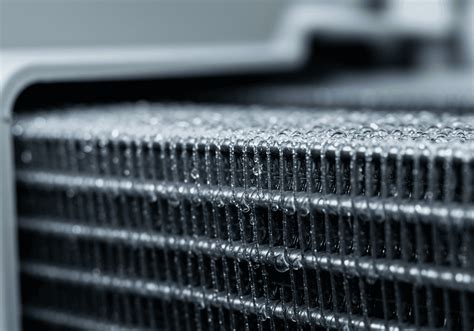How Does The Evaporator Remove Humidity From The Passing Air
Ronan Farrow
Apr 04, 2025 · 2 min read

Table of Contents
How Does an Evaporator Remove Humidity from Passing Air?
Understanding how evaporators work is crucial for anyone interested in HVAC systems, refrigeration, or even just maintaining a comfortable indoor climate. This post will explain the process in detail, focusing on how evaporators effectively dehumidify air.
The Science Behind Evaporator Dehumidification
At its core, an evaporator's dehumidification process relies on a simple principle of physics: the transition of a liquid (refrigerant) to a gas absorbs heat. This heat absorption is key to removing moisture from the air.
The Refrigerant's Role
The evaporator contains a refrigerant, a substance with a low boiling point. This refrigerant circulates through a network of coils inside the evaporator. The refrigerant enters the evaporator in a low-pressure, low-temperature state. This low temperature is what facilitates dehumidification.
The Heat Exchange Process
As the warm, humid air passes over the cold evaporator coils, a critical heat transfer occurs. The air's heat energy transfers to the cold refrigerant, causing the refrigerant to absorb the heat and begin to evaporate. This evaporation process is endothermic, meaning it absorbs heat from its surroundings (the air).
Condensation and Dehumidification
Because the air has lost heat to the refrigerant, its temperature drops. This temperature drop causes the water vapor in the air to reach its dew point. At the dew point, the water vapor condenses—it changes from a gaseous state to a liquid state—and forms water droplets on the cold evaporator coils.
Removal of Condensed Water
These water droplets are then collected and drained away from the evaporator, typically through a drain line. This is how the evaporator effectively removes humidity from the passing air. The air that exits the evaporator is now cooler and significantly drier than when it entered.
Factors Affecting Dehumidification Efficiency
Several factors can affect how efficiently an evaporator removes humidity:
- Refrigerant Temperature: A lower refrigerant temperature leads to more effective dehumidification.
- Airflow: Adequate airflow across the evaporator coils is crucial for optimal heat and moisture transfer.
- Coil Surface Area: Larger coil surface area provides more contact area for heat and moisture exchange.
- Air Temperature and Humidity: High humidity and temperature require greater dehumidification capacity.
- Refrigerant Charge: The correct amount of refrigerant is crucial for proper operation.
Evaporator Dehumidification in Different Applications
Evaporator-based dehumidification finds applications in various settings, including:
- Air Conditioning Systems: Central air conditioners rely on evaporators to cool and dehumidify indoor air.
- Refrigerators: Refrigerators use evaporators to maintain a cold temperature and remove moisture, preserving food.
- Industrial Dehumidifiers: Large-scale dehumidifiers utilize powerful evaporators for controlling humidity in industrial settings.
Understanding the principle of heat transfer and the refrigerant's role is fundamental to grasping how evaporators successfully remove humidity from passing air. This process ensures comfortable indoor environments and preserves the quality of goods in refrigerated spaces.
Featured Posts
Also read the following articles
| Article Title | Date |
|---|---|
| How Did Brewster Spend His Millions | Apr 04, 2025 |
| How Far Away Can Deer Smell Apples | Apr 04, 2025 |
| How Do I Reset My E Bike Battery | Apr 04, 2025 |
| How Do I Crop An Image In Cricut Design Space | Apr 04, 2025 |
| How Do Photo Projection Bracelets Work | Apr 04, 2025 |
Latest Posts
-
How I Seduced My Dad
Apr 04, 2025
-
How I Quit Ketamine
Apr 04, 2025
-
How I Learned To Drive Review
Apr 04, 2025
-
How I Became A Pirate Activities
Apr 04, 2025
-
How Humans Evolved 9th Edition Pdf Free
Apr 04, 2025
Thank you for visiting our website which covers about How Does The Evaporator Remove Humidity From The Passing Air . We hope the information provided has been useful to you. Feel free to contact us if you have any questions or need further assistance. See you next time and don't miss to bookmark.
